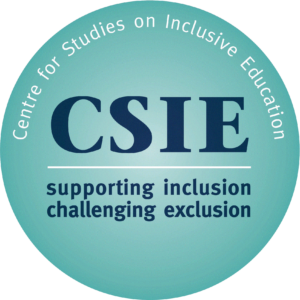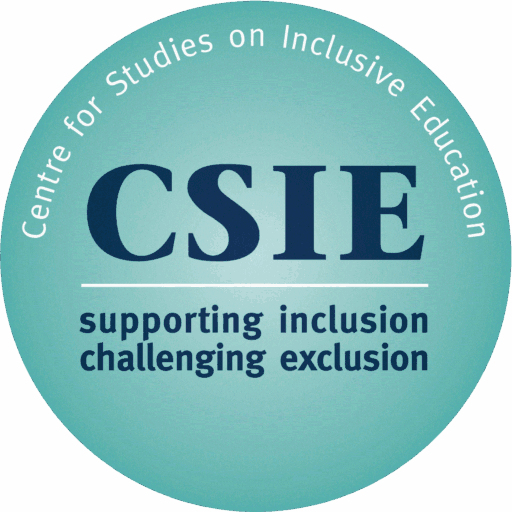March 4, 2023
It is not unusual to read a document which appears committed to inclusion, and to wonder if its intention is to create inclusive change or just pay lip-service to it. When we see that someone is “talking the talk”, we are keen to see if they will “walk the walk”.
On this occasion, we were surprised to see that this latest offering from the Department for Education (DfE) is not even talking the talk. First it speaks of a strong commitment to developing inclusive education, then it announces plans to strengthen alternative provision and prepare teachers to work in separate settings. This flies in the face of inclusion and goes against the spirit of the Equality Act and its commitment to disability equality.
We offer below a bit more information on what this document is, and why we suggest it is not even talking the talk.
The government announced in 2019 that it would carry out an SEND Review, to explore the impact of the Children and Families Act 2014 on children and young people with labels of SEND. It is important to remember that this Act had been introduced in order to overhaul the previous statutory framework, which was no longer seen as fit for purpose, and to re-ignite parental confidence in the system.
In March 2022 the DfE published the ‘SEND Review: Right Support, Right Place, Right Time’ as a Green Paper which was open to consultation from relevant and interested parties. The Review concluded that there are three main issues causing concern: frustrated parents and young people; poor outcomes for children & young people with labels of SEND; and unsustainable financial strain on the system. These are alarmingly similar to the failings of the previous framework, so the Children and Families Act does not seem to have solved the problems it set out to address.
CSIE responded (with link to the news item on our response please – it may need to be slotted in first) to the consultation through the collective voice of the Special Educational Consortium and an additional submission of our own. We argued that the issues causing concern have more to do with implementation of the Act and that, therefore, there is no need to amend existing legislation or statutory guidance.
And now, one year on from the publication of the Green Paper, the DfE has published the ‘SEND and Alternative Provision Improvement Plan’, outlining how it intends to move forward in light of the consultation responses received.
Inclusive education for all remains CSIE’s top priority, so our initial response to this publication was one of excitement. Despite the reservations we had expressed regarding the Green Paper, we were excited to see how this would set out inclusive education as a prime concern and area for improvement.
Before we go any further, let us ensure we clarify how inclusion in education is defined. We take our definition from the UN Convention on the Rights of Persons with Disabilities, of which Article 24 (Education) calls for “an inclusive system at all levels”. General Comment no. 4, which explains what Article 24 means by inclusion, clarifies the meaning of four key terms: exclusion, segregation, integration and inclusion. Exclusion, not mentioned in Article 24, is when children are not in school. Segregation, also not mentioned at all in Article 24, is defined as the education of disabled children in separate settings, isolated from non-disabled children. Integration, it says, is the process of placing disabled children in existing mainstream institutions and expecting them (the children) to adjust to the requirements of these institutions. Inclusion, on the other hand, is the process of “systemic reform” involving changes in content, methods, approaches, structures and strategies in education, so that all children can have an equitable and participatory learning experience. This is what Article 24 means by inclusive education, and this is the definition we have adopted.
Now to the Improvement Plan. Please notice first how Alternative Provision has been added to the title of the document. Alternative provision was not mentioned when the SEND Review was launched, it had a prominent place in the content of the Green Paper, and now appears in the title of the Improvement Plan. Strengthening Alternative Provision is a particular way of addressing some of the issues causing concern. Building capacity in schools, thereby strengthening inclusion, is another way to address exactly the same issues, but this is hardly mentioned in the Improvement Plan.
With the jarring addition of Alternative Provision aside, the Plan begins positively. Within the first few paragraphs of the Executive Summary, we read that inclusion is indeed a priority, with the document stating that the proposed new National Standards will set out “types of support that should be ordinarily available in mainstream settings”. A promising start, focussing on including children in their local school, rather than keeping that door locked for some of them.
This is where the repetition of thematic contradiction begins. There is frequent mention of inclusion as an aspiration, while all the improvements in the plan focus on increasing segregation.
Let’s refresh our memory of the existing SEND Code of Practice which states that schools and colleges “must use their best endeavours to ensure that such provision is made for those who need it” and that the UK government is “committed to inclusive education of disabled children and young people and the progressive removal of barriers to learning and participation in mainstream education”. We use this as our mainstay; children should be educated in their local school, and all schools should aim to meet their needs under the public sector equality duty l duty to make reasonable adjustments – more on this later. One would hope that any new legislation would emphasise this requirement, not least because research has repeatedly shown that inclusive education benefits all children – more on this, too, later. However, this new Plan separates and segregates by highlighting Alternative Provision in its very title and proposed changes. Planning for an increase in Alternative Provision is planning for more segregation, it is as simple as that. CSIE sees this as committing to a direction of travel away from inclusion, away from the stated intention of the Code of Practice and away from the requirements of the Equality Act, the UN Convention on the Rights of the Child and the UN Convention on the Rights of Persons with Disabilities, both of which the UK has signed and ratified.
The Improvement Plan says that the government is “approving a tranche of applications from local authorities to open new special free schools” and that it is “committed to delivering alternative provision that is fully integrated with the wider SEND system”.
In our opinion, and we are certainly not alone in our thinking, more special schools and alternative provision does not inclusion make.
The Plan claims that it will “Extend funding until March 2025 of the alternative provision specialist taskforce (APST) pilot programme, which is testing co-location of a diverse specialist workforce in pilot alternative provision schools”. This sounds to us like a plan to strengthen segregation, especially as no funding is announced to support building capacity in ordinary schools. We struggle to understand the purpose of creating isolated groups of experts when the need is in mainstream settings. This is even more baffling, when one notices the contradiction between the evidence and the Plan. As the Plan itself states: “when children and young people who are in alternative provision were asked what would have helped them stay in their mainstream school, the most common answer was teacher training in SEND”.
Throughout the Improvement Plan, we read about the implementation of new alternative provision, the opening of special schools and the use of specialised staff to increase access to learning and benefit existing educational staff and new teachers.
We welcome the suggestion of building SEND issues into Initial Teacher Training (ITT) – this is, indeed, long overdue – but are rather alarmed at the Improvement Plan’s suggestions. We are deeply concerned at the suggestion of “appropriate use of special schools for ITT placements”, which is intended to “enable expertise from special schools and alternative provision”. Just this. Just planning to learn from examples of segregated provision. How can teachers be expected to work effectively in inclusive settings, if ITT is not squarely focussed on drawing from the established range of inclusive practice? How can every teacher become a teacher of SEND, if ITT does not equip them to work in inclusive settings? Has the commitment to inclusion, stated in the Code of Practice, been overlooked? How can the “progressive removal of barriers to learning and participation in mainstream education” ever happen, if ITT does not adequately prepare our future workforce for inclusion?
The Plan tells us that its proposals – and we won’t repeat here our assertion that there is no need for new legislation or guidance, all the more if it is not evidence-based – will not come into effect for another two years. It does not say what will happen in the meantime. 2025 is too late for the children with labels of SEND who are in school now. No amount of consultation and new legislation will impact their inclusion right now. What would be beneficial to them immediately? Well trained staff with the necessary level of comfort and expertise to work with these children and young people in their local mainstream setting. We do not see much from the Improvement Plan that alleviates our concerns over the lack of this, now or in the next few years.
It is heartening to see a promise to give “more guidance to increase awareness of schools’ duties under the Equality Act 2010 to prevent discrimination” and “to prevent discrimination from arising in the first place by supporting schools to comply with their duties under the Equality Act 2010”, but there is no mention of how. More to the point, one of the legal duties that schools have under the Equality Act is to make reasonable adjustments, in order to become more accessible. This is an anticipatory duty, which requires schools to identify institutional barriers to inclusion and work towards removing them. In other words, the Equality Act requires settings to become more accessible and include more disabled pupils, and this Improvement Plan sets out to drive pupils away from their local school. The Public Sector Equality Duty also places a duty on schools to foster good relations between disabled and non-disabled people. It is hard to imagine how the DfE will support schools to comply with this duty when it plans to send disabled pupils to different settings.
Ambivalent about the value of inclusion? You are not alone. But might you be thinking of integration? In line with the definitions mentioned above, placing children in their local school without the necessary support amounts to integration. And if you are witnessing integration and concluding that inclusion does not work, we would encourage you to think again.
When we consider the value of inclusion, the evidence is compelling. The Alana Institute’s Summary of the Evidence on Inclusive Education(with link to https://alana.org.br/wp-content/uploads/2016/12/A_Summary_of_the_evidence_on_inclusive_education.pdf) reviewed 280 studies from 25 countries and concluded that there is “clear and consistent evidence that inclusive educational settings can confer substantial short- and long-term benefits for students with and without disabilities”. More specifically, this research confirms that the benefit of including disabled children in ordinary schools is twofold: a) it leads to improved educational outcomes not only for disabled children but for their non-disabled peers as well; and b) it better supports the social and emotional development of all children, disabled and non-disabled.
Who wouldn’t want that for all children and young people? The wider implications of this for society are wonderful, with every generation we could see a step toward a more inclusive society, if inclusive education is the norm.
We can only hope that the DfE walks the walk sooner rather than later…


